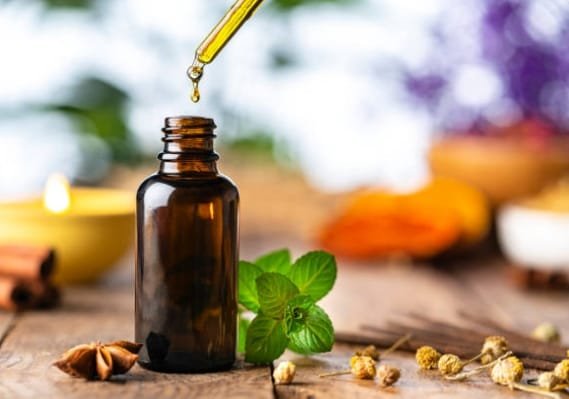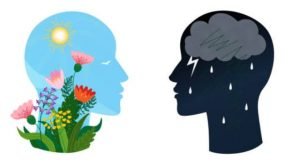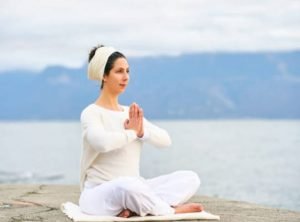
by admin | Jun 10, 2022 | Fitness
Muscle building 101 | Part 3 – Types of muscle fibers
In the last 2 articles of the muscle-building series, you learned that each workout can be measured by certain parameters (variables). The ratios of these variables trigger different energy systems and components of the body and its musculature, thus creating a different end result.
In this article, we are going to go in-depth on the muscles’ active, contractile components, which we know as “muscle fibers”.
What Are Muscle Fibers?
Each muscle fiber, also called a “myofibril”, is an active, contractile component of each of your muscle groups. These are the active components that allow for muscular contraction and there are different types of muscle fibers. Depending on how demanding the activity is, the body chooses which muscle fibers to activate
Types Of Muscle Fibers

When we look at muscle fibers as an active component of your musculature, we can differentiate between two main muscle fiber types:
- Type 1 – Slow-twitch muscle fibers
- Type 2 – Fast-twitch muscle fibers
Slow-Twitch Muscle Fibers
This type of muscle fiber is the weaker type of tissue, as its power & force production levels are quite low. Your slow-twitch muscle fibers get activated during activity that is not demanding or in other words, low in intensity. Though generally weak, the slow-twitch muscle fibers can work for hours on end.
This is the muscle fiber type that was designed for endurance bouts, such as cross running, prolonged rope jumping or any other low-intensity activity that is fairly long in duration.
Fast-Twitch Muscle Fibers
On the other hand, we have the fast-twitch muscle fibers, which are the stronger, more powerful active components of your musculature. Your fast-twitch muscle fibers get activated during intense activity that demands the production of force/power. This type of fiber was designed for short, power-burst movements, such as a sprint or any type of resistance/weight training.
The fast-twitch fibers are the most powerful ones and have the highest potential for hypertrophy (growth). Furthermore, the fast-twitch muscle fibers have 2 more subtypes – Fast-twitch Type 2X & type 2B. Type 2X fibers are able to generate the most force and power output but are generally inefficient due to reaching fatigue fairly quickly.
Type 2B fibers on the other hand are a mix of type 1 and type 2x fibers, meaning that they can endure more intense activity for longer.
To Sum It Up
Your musculature is made up of 2 different types of muscle fibers – Slow & Fast-twitch. The slow muscle fibers get activated during low-intensity, prolonged activities. These fibers can work at low intensity for hours on end but cannot produce enough power and force for intense activities like sprinting.
This is where fast-twitch muscle fibers come in. When the task at hand is to engage in more intense activities, the body utilizes the power of your fast-twitch muscle fibers. These muscle fibers are big, strong, and can produce short powerful bursts, but might fatigue too quickly, compared to slow-twitch fibers.
Training Tips

If you are not a competitive athlete, your best bet would be to stimulate both types of muscle fibers. Stimulating slow-twitch fiber development is best done by engaging in low-intensity, prolonged cardio activities, such as jogging, swimming, rope jumping, etc. Doing this type of work will primarily result in improved endurance and with it, improved cardiovascular and respiratory efficiency.
Developing your slow-twitch muscle fibers, however, won’t result in significant visual body changes. Oppositely, stimulating fast-twitch fiber development is best done by engaging in high-intensity training activities, such as weight training, calisthenics, sprinting, etc. Doing this type of training will primarily result in improved levels of strength, strength endurance, and power output. Developing your fast-twitch muscle fibers is the best way to go if one of your goals is to sculpt an aesthetic body.
Conclusion
Ultimately, if we look beyond the ego that tells us to look better, we can come to one simple conclusion… That is namely the fact that your body is a special, ever-so-capable biological machine of beauty. For the general population that is not engaged in competitive sports, the best bet is to develop the body all-around.
In doing this, you will be able to experience the freedom of movement and you will also look good, perform well, be strong, flexible, and powerful. “It is a shame for a man to grow old without seeing the beauty and strength of which his body is capable.”
-Socrates

by admin | Jun 10, 2022 | Health, Mind
Nature Therapy
Fun Ideas For The Different Types Of Nature Therapy Practices Most of us live fast-paced, urbanized, and hectic lives with little free time and possibility to rest surrounded by wildlife. As we explained in our previous article, nature therapy is when one spends time in nature doing activities aimed at reconnecting them to the environment with the purpose of bettering their mental and physical health.
Humans are a part of a vast ecosystem that is filled with natural antidepressants, stress-relievers, system-boosters, etc. The thing is… Many of us sometimes forget to benefit from it. Nature therapy’s idea is to build or strengthen the connection with our natural habitat and utilize its multiple resources with the help of various fun and calming activities.
This is why we have compiled a list of actions often recommended by psychologists for this exact purpose. Here are the best nature therapies to try!
Meditating (ommm….)

This is mostly used as a time for self-reflection and introspection. While meditating in a room can prove challenging for people with high stress levels, the entire trip up to the meditation spot in nature calms them down enough to make the whole experience much easier and more enjoyable. People have also said that the calming effects of simply being surrounded by nature are sometimes enough to make them feel better, even if they’re having difficulty meditating.
Different practices of outdoor meditation may include focusing on a specific object (like a tree or a flower instead of the whole forest) or a sound (like a river or the birds) and thinking about exactly where they come from and why they matter.
This is done so that you can understand better that some things just are… and that’s okay. Two very different types of people benefit a lot from outdoor meditation, and those are the elderly people with little daily activities and people with extremely busy lives. The reason for the first group is that they can connect with the big trees, for example or the essentially eternal bodies of water, and feel at peace while just existing.
The second type often focuses on things that are smaller to remind themselves of their individuality and their innocence in being simply what they are with no further responsibilities.
Playing with animals (from animal-assisted therapy)

Connecting with different species can be extremely therapeutic especially if you spend a lot of time alone. You can walk dogs, play with bunnies, chickens, or even horses and while doing so, remind yourself of all the beautiful things a living being can do and all the excellent qualities it has.
It is common for people with different illnesses to have treatment pets because of the trust, dependence, and love they build for each other. A lot of psychologists recommend getting in contact with animals in order to establish those connections exactly. Spending time with something completely different from you, but still managing to build a bond and have a great time is often a very grounding experience.
And let us tell you this – Such experiences can massively help battle anxiety and depression. If you can’t have a pet due to personal reasons, going to the zoo or a dog shelter can do the trick almost as well, and it has the benefit of making the trip the focus of your day.
Camping (from wilderness therapy)
Here you let go of modern-day comfort and choose to depend solely on nature and your own actions. Such activities are helpful in gaining confidence in yourself and realizing that you are capable of way more than what you do on a daily basis. Improving feelings like self-worth and accomplishment are why most people try this type of therapy, seeing as it offers you a situation in which you both have the stimulation needed to act in the moment and your progress is visibly tangible.
You can try camping on a beach or mountain as well as hiking, visiting caves and waterfalls or even going fishing or bird spotting in rugged terrain.
Going to an outdoor workout (from green exercise therapy)
Running or cycling outside is better than doing so in the gym both for your physical and mental health, but what you hadn’t thought of probably is that you can do many more different types of exercise in the fresh air. Take Tai-chi or dancing for example – there are open-field classes in which you not only get your workout in but also come in contact with nature.
Many people suggest you try doing these activities or similar ones barefoot both because it’s easier to feel one with your surroundings and because it helps with the flow of the movements themselves.
Rafting (from adventure therapy)
The idea here is to explore what’s outside of your comfort zone. Although you can go by yourself, many people recommend you go with your therapist so that they have a first-person perspective on how you’re feeling at the moment and help you overcome your fears if you need assistance.
Facing something big, exciting, and maybe a bit scary gives you a thrill but has a calming effect afterward. Doing the action itself gives you the adrenaline boost while realizing it wasn’t so scary after all, and knowing that you managed to do it calms you down and makes you both humble and accomplished.
This kind of therapy is often used for treating addiction because it reminds people that good emotions, either intense or not, can be found through your own actions instead of different substances. If you can’t go rafting, you can try bungee jumping, rock climbing, zip-wiring, and many more, depending on where you live.
Gardening (from horticulture therapy)

The idea here is to take care of something and watch it grow. Many people lose their sense of individuality and forget that their actions have actual consequences, especially when they’re a part of a huge company, for example. In situations like this one or if you’re living alone in a new city, you can feel as if the effort you put in is not worth as much as you thought it did or would like it to.
Taking care of something and nurturing it to reach its next stage of development is a very hands-on example of why your actions are essential. Knowing that something depends on you and that you’re important for something you love can give you a sense of purpose you may lack in a bustling cityscape. You can make a micro-sized garden in your own apartment (if you don’t have a lot of space, you can take care of one or two potted plants) or a more sizable gardening place if you have a yard, and both are interchangeable and fun throughout the entire process.
To Wrap It Up
Nature therapy has many different practices and provides countless opportunities suitable for people from all walks of life. You will undoubtedly find something you love as a program in nature therapy, and it will not only help you with your problems but can also be made into a lifelong hobby or even passion. Most people have shared that exploring the world and themselves by connecting to it through different activities has not only pulled them out of a rut but helped them grow in ways nothing else could.
With its overwhelming positive effects and ways they can be achieved, there’s really no reason why you shouldn’t try at least one or two of the ideas on this list. We are sure that they will give you an experience you will remember forever.

by admin | Jun 10, 2022 | Mind
3 PERFORMANCE HABITS THAT WILL DOUBLE YOUR CHANCES OF SUCCESS
When it comes to success, what is it do you identify it to? Would you consider yourself successful? If so, what is your proudest achievement? If not, what are the requirements that you would meet to feel this way? Let’s start with the issue of what constitutes success. As stated earlier, the responses differ significantly from one individual to the other.
Some equate success to financial or professional success. Others are concerned about their personal belongings, as others find it the ability to strike a balance between work and personal life. ‘In a survey conducted by Ipsos, Americans aged 18 and up were polled, and it was discovered that 67 percent of those polled linked success with achieving personal goals.
66 percent associated it with having good relationships with friends and family, while 60 percent was doing what they loved for a living. In this article, we’ll be mentioning 3 effective habits that will double your chances of success. If you want strategies and other ways that could make you successful, check this out.
1. SELF IMPROVEMENT

Self-improvement is the best way to achieve success. You might, for example, read books on your field of interest or enroll in courses to learn a new ability. Any new experience provides an opportunity to grow and if it does not seem to be so at first glance, it has the potential to improve your life if you can make it worthwhile.
Don’t miss out on this. Such a matter as easy as mastering a new keyboard shortcut makes you more advanced.Consider this: only one new piece of information a day adds up to 365 new pieces of information by the end of the year.
2. PLAN AHEAD
Smart people are still working on a certain target. What’s more, it’s not just this one target they’re aiming for; there is a slew of tiny, almost insignificant objectives that will finally lead to the major ones. After that, one target is accomplished, and another is set. You would have more energy and a feeling of accomplishment if you do it this way. So, do you have any targets that you’re aiming for?
Then, it’s time to make that change. This way, you’ll also not get hit by unpleasant surprises.
3. BE SELF DISCIPLINED

An individual who is good at their job must have a well-planned work schedule – personal and career-wise. This means you’ve got to keep it true to yourself, keep time, focus entirely on your work, and so on. It’s only when you do something worthwhile at home, away from the pressures of your manager or deadlines, that you demonstrate the real capacity for fulfillment in life.
It’s going to be tough building such willpower, and nothing worthwhile comes from being lazy; success comes from being organized, as, you present yourself as a trustworthy individual with whom people can rely.
CONCLUSION
Before you do something, ask yourself if the advanced version you wish to become would do it. It’s all a matter of doing the right things and persevering through the discomfort that comes as a result.
That said, remember success is destined for people like you.

by admin | Jun 10, 2022 | Mind
Psychology In The Last 100 Years
Important Events Part I
Psychology has been a field of interest and study for millennia, which is one of the main reasons it has grown to its current stage. The first written documentation we have about it is from 1550 BCE in the Ebers papyrus, where depression and thought disorders are mentioned. However, a lot of time has passed since then and current psychology is different in pretty much every aspect – from the way we research and what we’re focusing on to how we connect it with various scientific fields and how we use the gathered information.
In this series, we’ll delve into psychology and how it has developed in the last century. Ready to learn some interesting facts in chronological order? Read on!
1920 – The Little Albert Experiment

This experiment was conducted to prove classical conditioning in humans. In the experiment, a one-year-old child, known as “Albert,” was given a small white rat to play with, and every time he touched it, a loud startling noise was made to scare the child. After a few repetitions of the situation, when Albert saw the rabbit, he would try to run away from it, showing fear of the animal because of the sound.
He had the same response to white bunnies and even a Santa Claus mask. This study proves our conditioning and is highly controversial today from an ethical standpoint.
1923 – The Ego And The Id

This prominent paper by Sigmund Freud is an analytical study of the human psyche in which he outlines the relationships of the id, ego, and super-ego. It explains various psychological conditions based on the dynamics between the three different parts of us. This is one of the books with the most prominent significance in psychology to this day and is studied for each kind of psychology degree.
1935 – Thematic Apperception Test
This projective psychological test consists of ambiguous pictures of people and situations about which the patient has to think of a story. His explanations are then used to point out underlying thoughts, emotions, and perceptions. This helps psychologists understand the person sitting opposite them better and work on their problems.
It is widely used to this day and although there has been a fair share of controversy around it, it is an exciting piece of the history of psychology.
1943 – Maslow’s Hierarchy Of Needs
This was a part of a paper called “A theory of human motivation” published by Abraham Maslow, that created a classification of our different kinds of needs. Maslow distinguishes two types of necessities, namely deficiency, and growth.
He puts the following aspects in the two – Deficiency & Cognitive needs. Deficiency Needs are mainly physiological – Safety, belonging, and esteem. Growth Needs are more cognitive – Aesthetic, self-actualization, and transcendence. This model is used today for various definitions concerning societies, individuals, and groups of people.
1949 – The Organization Of Behaviour: A Neuropsychological Theory
Donald Hebb is a Canadian psychologist considered the father of neuropsychology. In this work of his, he manages to explain the connection between the physical function of the brain and the function of the mind. He also describes how neurons work closely with each other and, at the same time, are more likely to make a permanent connection between themselves.
This is commonly explained as “neurons that fire together, wire together.” and is a revolutionary discovery in neuroscience.
1952 – The First Diagnostic And Statistical Manual Of Mental Disorders
This is a classification by the American Psychiatric Association used by psychologists, doctors, pharmaceutical and health insurance companies, the law system, and drug regulation agencies. It has undergone revision five times between when it was first written and now and will continue to be updated.
In this manual, you can find the definitions of each mental disorder written in a common language, the definitions themselves being based on myriads of studies and statistics.
To Wrap It Up
Psychology changed a lot at the beginning of the previous century. The way we used to think about many problems is now different because of our more profound understanding of the human brain. Follow up with us in part two of this article, where we pinpoint some of the most groundbreaking successes in psychology in more recent times.

by admin | Jun 10, 2022 | General
The Top 7 Benefits of Aromatherapy and How to Make the Most of Them
Introduction: Aromatherapy is a centuries-old technique that involves the use of plant extracts to enhance your mood and general sense of well-being. These natural botanical solutions have been used to promote relaxation, ease depression, and even alleviate pain.
Aromatherapy is a natural way of healing the mind and body. It has been used for centuries to promote healthy emotional and physical well-being.
The general benefits of aromatherapy can be seen through the following ways:

-It helps in psychological issues, helps calm the nervous system, improves mood, and lessens stress, anxiety and depression by inducing a sense of relaxation.
-It improves concentration, learning and memory by releasing your feel-good hormones and therefore aids your endocrine system as well as supporting many physiological issues
-It boosts the immune system by stimulating the release of white blood cells that help fight infections.
The Top 7 Reported Benefits of Aromatherapy
Aromatherapy is the art and science of using aromatic plant materials, most commonly in essential oil form, to improve health and wellbeing. Some of the most commonly reported benefits are below, however there are a great deal more.
1) Aromatherapy has helped with mental and emotional health
2) It can work as a natural remedy for physical ailments
3) It can boost concentration, memory, and cognitive performance
4) It helps with stress and depression
5) It may have anti-inflammatory properties, ease pain and is good for the skin.
6) Helps improve sleep quality
7) Curbing cravings for sweets
How to use Aromatherapy to your advantage.

To get the most out of aromatherapy, it is important to know how it works.
Aromatherapy is thought to work by way of stimulating smell receptors in the nose. These send messages through the nervous system to the limbic system. This is the part of the brain that controls emotions.
There are three steps to consider when using aromatherapy: anointing, inhalation and wearing. Anointing is a process in which you apply essential oils or other aromatic substances to your skin. Inhalation is the act of breathing in deeply from your nose and mouth while taking a bath or sitting near an aromatic candle. Wearing involves using a fragrance-free body lotion or carrier oil then adding your favorite oil such as lavender oil at night to help you sleep better and improve your mood during the day.
Aromatherapy is the use of essential oils in order to promote health and well-being. Essential oils are extracted using either steam distillation or cold pressing and are then dispersed into the air. There are different ways of practicing aromatherapy, such as simply leaving an opened bottle of oil on your desk for hours.
In this article, we will discuss ways in which you can use aromatherapy to your advantage when feeling stressed at home or work. These include filling a few drops of your favorite essential oils in a diffuser, using calming scents like lavender and chamomile to help you focused, or applying an essential oils blend onto the bottoms of your feet before walking into a meeting.
1) Aromatherapy can be used to help with focus in the workplace. When workers take a break to smell some essential oils, they release feel-good hormones and help restore their mental energy. Dab a little on your wrists, or on your hands and inhale gently, it will open up the lungs, relax you and help you to refocus.
2) Use a diffuser, add water and a few drops of oils into the diffuser and let it gentle seep into the air around you. This is wonderful if you’re tired and can’t sleep as mentioned above but also if you need to revive yourself, swap out lavenders and calming oils for peppermint or eucalyptus to freshen the air and as a pick-up, or for rosemary or sage if you need to concentrate, diffusing oils is great for helping stay focused in exam revision or on the day.
3) Have a massage with a professional Aromatherapist. There is nothing quite like the deeply relaxing and therapeutic benefits one receives from a professional massage and the feel of the oils on the skin as well as the beautiful aromas blended to suit your situation will make it all the more a wonderfully intoxicating experience.
Whilst inhalation is arguably the safest way of administering essential oils and it’s the fastest way to get essential oils into the blood stream, it’s still very important to use oils with caution. Always read the labels and use as directed, and always diffuse in a well-ventilated area. Why not try out one of the above and see for yourself how it helps to calm and revive.
Disclaimer Note: This article is for entertainment and informational purposes only.
It’s important to note though, that just because something is natural does not mean zero risk. While many oils are very low risk there still can be complications, contraindications and contra-actions.
The internet is full of information on how you can cure yourself with natural remedies, but we recommend that you seek out a Qualified Natural Practitioner or Aromatherapist and always consult a Doctor before trying any new things. Never stop taking any prescribed medication without speaking to your health practitioner first.






















